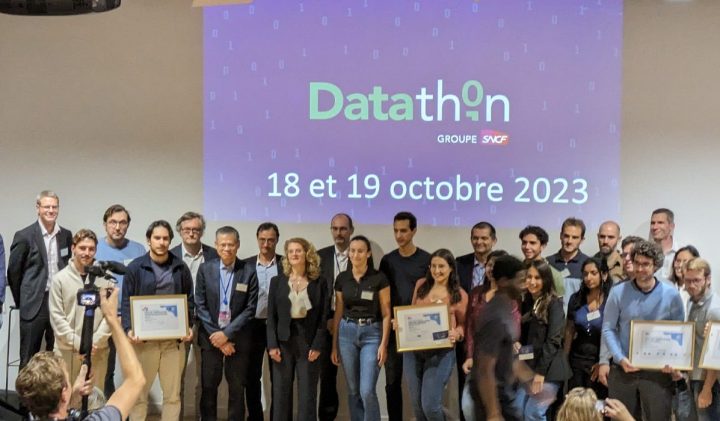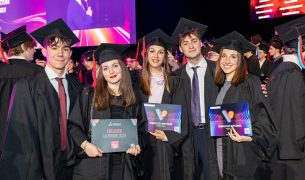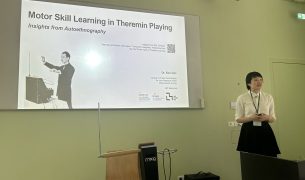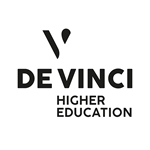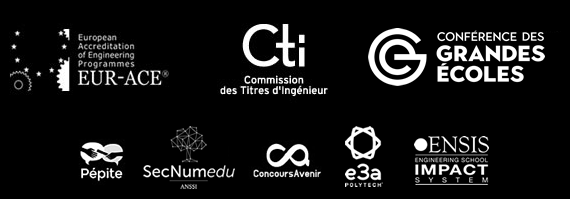The inaugural edition of the SNCF Datathon, often called the data hackathon, unfolded at the SNCF Réseau premises in the Île-de-France region. The grand prize in this competition, which featured six use cases and 12 teams, was claimed by students from ESILV.
Students from the Data and Artificial Intelligence major took part in this educational event to meet the challenge of exploiting railway data in 48 hours. During the two-day challenge, business experts and students worked together to use the data provided to achieve the SNCF Group’s* strategic objectives.
The data science skills of ESILV students: much more than a fresh perspective
The SNCF Group and ESILV participants worked on real-life problems encountered in the field. They developed solutions using data in various forms when carrying out the use cases.
As a bonus, this victory provided them with networking and recruitment opportunities. The students selected to participate were assigned real-life problems proposed by the SNCF.
They worked in groups with five members of the SNCF Group on specific questions throughout the two-day Datathon.
On 18-19 October, 12 teams worked on 6 #data challenges, including the creation of predictive models (air quality in stations, the impact of weather on axles, etc.) and multimodal comparators.
A look back at 48 hours of rich exchanges thanks to students from @ESILVparis. pic.twitter.com/y5Rq8Z1RFB
— SNCF Numérique (@SNCFNumerique) October 24, 2023
The six digital challenges of the SNCF Group Datathon
In just two days, the Datathon participants had to respond to 6 challenges put forward by the SNCF Group. The coaches supervised the students and had access to equipment and a work methodology.
- Making SNCF Voyageurs more attractive to elected representatives and the public: Design a functional model of a performance dashboard for a line or station by putting yourself in the shoes of a user.
- Increasing the modal share of rail travel by bicycle: Developing an analysis and decision-making tool to visualise the cyclability of stations and identify projects that would improve the modal share of rail travel by using bikes to get to stations.
- Predict clutching/skidding phenomena: Propose a model that predicts whether clutching will occur on a given date.
- Impact of the weather on the railway system: Research correlations between extreme weather events and incidents in railway operations and maintenance and identify the most influential weather parameters and the most sensitive components or sub-systems.
- Air quality forecasting: Predict the concentration of fine particles in an underground station at different times of the day.
- Multimodal land use comparator: Establish a general indicator of land use per inhabitant per year (square metres per passenger-kilometre per year) for all modes of transport and produce a comparative view of mobility according to origin/destination (graphical or geographical).
A Hussar Academy-certified datathon
At the end of the event, the engineering students presented their projects to a panel of judges, who then selected the winning team: the results and Hussar Academy certificates were announced at the closing ceremony.
In addition, students looking for a work placement, a work-study programme or a job were presented with job offers within the SNCF Group, enabling them to submit their applications by sending in their CVs.
The prizes were awarded in the evening: a trophy for each of the six themes and a grand prize for the jury’s favourite, awarded to the model for predicting the phenomena of clutching and skidding developed by ESILV students.
The event provided an opportunity to organise a round-table discussion on three key themes for the Group: the balance between protecting know-how and sharing data to maximise its value, the benefits of segmentation by domain for better control of assets, and data for business, a performance driver.
*The Société nationale des chemins de fer français, French for “National Society of the French Railways”, is France’s national state-owned railway company. It operates the country’s national rail traffic along with Monaco, including the TGV, on France’s high-speed rail network.
Lear more about ESILV’s major in data & artificial intelligence









